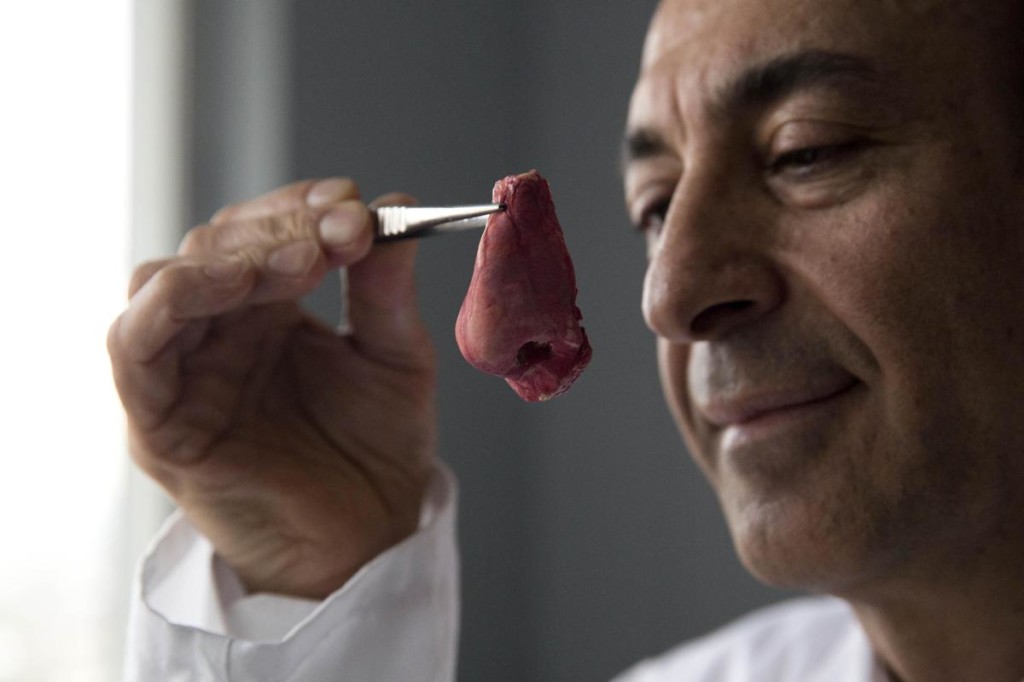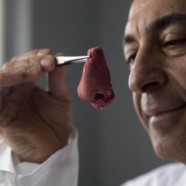Scientists Make Body Parts in Lab
In a London hospital, scientists are growing noses, ears and blood vessels in the laboratory in a bold attempt to make body parts using stem cells. It is among several labs around the world that are working on the futuristic idea of growing custom-made organs in the lab.
While only a handful of patients have received the British lab-made organs so far, including tear ducts, and windpipes, researchers hope they will soon be able to transplant more types of body parts into patients, including what would be the world’s first nose made partly from stem cells.

Professor Alexander Seifalian poses for photographs with a synthetic polymer nose at his research facility in the Royal Free Hospital in London. (AP Photo/Matt Dunham)
“It’s like making a cake,” said Alexander Seifalian, the scientist leading the effort, at University College London. “We just use a different kind of oven.”
During a recent visit to his lab, Mr. Seifalian showed off a sophisticated machine used to make molds from a polymer material for various organs.
Last year, he and his team made a nose for a British man who lost his to cancer. Scientists added a salt and sugar solution to the mold of the nose to mimic the somewhat sponge-like texture of the real thing. Stem cells were taken from the patient’s fat and grown in the lab for two weeks before being used to cover the nose scaffold. Later, the nose was implanted into the man’s forearm so that skin would grow to cover it.
Mr. Seifalian said he and his team are waiting for approval from regulatory authorities to transfer the nose onto the patient’s face but couldn’t say when that might happen.
Mr. Seifalian estimated about 10 million pounds ($16 million) has gone into his research since 2005 but said he hoped lab-made organs would one day be available for a few hundred dollars.
“If people are not that fussy, we could manufacture different sizes of noses so the surgeon could choose a size and tailor it for patients before implanting it,” he said. “People think your nose is very individual and personal but this is something that we could mass produce like in a factory one day.”
Source: AP

